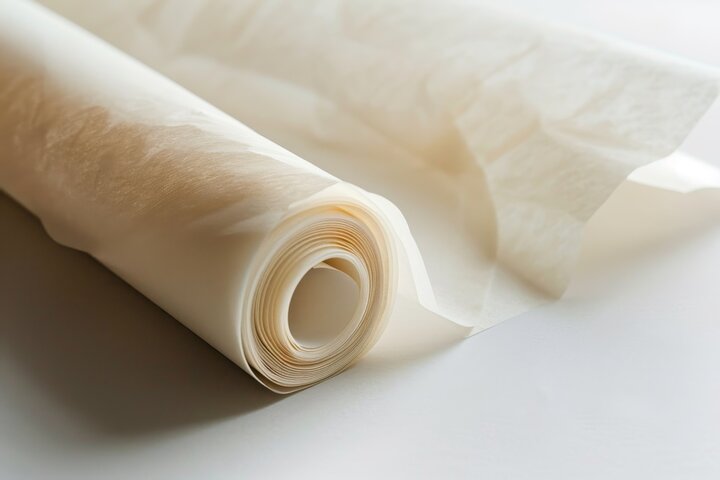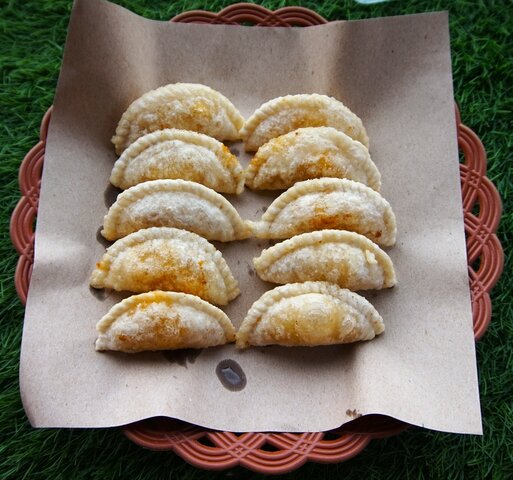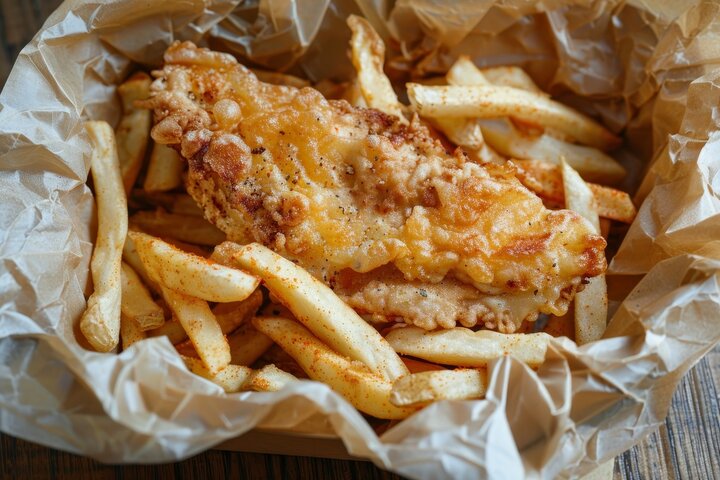
Greaseproof paper is a kitchen essential, but have you ever wondered what makes it resistant to oil and moisture? Unlike regular paper, it doesn’t absorb grease, making it perfect for food packaging and baking. But is it the same as parchment or wax paper? Many people confuse these materials, leading to incorrect usage.
In this post, we’ll explore what greaseproof paper is, how it’s made, and its best uses in cooking and packaging. You'll also learn how it compares to other specialty papers and how to choose the right one for your needs.
What is Greaseproof Paper?
Greaseproof paper is a type of specialty paper designed to resist oil and grease. Unlike regular paper, it has a dense structure that prevents fats from seeping through, making it ideal for food-related applications. You’ll find it in kitchens, bakeries, and even industrial settings. But what exactly makes it "greaseproof"?

Why is it Called "Greaseproof"?
Greaseproof paper gets its name from its unique ability to repel grease and oil. It undergoes a refining process that rearranges the cellulose fibers, creating a tight network. This structure blocks grease from penetrating the surface without needing a chemical coating.
Here’s how it compares to other common papers:
| Paper Type | Grease Resistance | Common Uses |
| Greaseproof Paper | High | Food wrapping, baking, fast food packaging |
| Parchment Paper | Moderate (coated) | Baking, steaming, cooking |
| Wax Paper | Low (coated) | Cold food wrapping, surface protection |
Industries That Use Greaseproof Paper
This paper is widely used across multiple industries:
Food & Beverage: Restaurants, bakeries, and fast-food chains rely on it for wrapping burgers, pastries, and fried foods.
Confectionery: Candy makers use it to wrap chocolates and sweets, keeping them fresh without absorbing oils.
Industrial Applications: It’s used to package greasy machine parts and separate sticky materials in manufacturing.
Retail & Packaging: Many brands customize greaseproof paper with logos for eco-friendly, stylish food packaging.
How is Greaseproof Paper Made?
The Manufacturing Process
Greaseproof paper is made from wood pulp, which is processed into cellulose fibers. These fibers give the paper its structure and strength. The manufacturing process involves pressing and refining to increase the paper's ability to resist grease. Special chemicals can also be added to enhance performance. The combination of these treatments creates paper that resists oils and fats.
Raw materials used in greaseproof paper: The main material is wood pulp, which is processed and chemically treated to enhance the paper's resistance to grease and moisture.
Special mechanical processes for grease resistance: The pulp is pressed and refined in a way that strengthens the cellulose fibers, providing resistance against grease. This step is essential for producing high-quality greaseproof paper.
Differences between natural and processed greaseproof paper: Natural greaseproof paper mainly relies on mechanical processes to resist grease, while processed types often incorporate additional chemicals to improve durability and grease resistance.

Coated vs. Uncoated Greaseproof Paper
| Feature | Coated Greaseproof Paper | Uncoated Greaseproof Paper |
| Coating | Silicone, paraffin, or other materials are applied to provide a smooth surface. | No coating is applied; resistance comes from the fiber structure. |
| Grease Resistance | Coated paper has a superior resistance to grease, keeping oils and fats from seeping through. | Uncoated paper resists grease but to a lesser degree compared to coated options. |
| Applications | Best for baking, food packaging, and situations requiring a non-stick surface. | Often used for wrapping sandwiches, lining trays, or general food handling. |
| Durability | Coated greaseproof paper is more durable under prolonged exposure to grease and moisture. | Uncoated paper is less durable but still effective for short-term use. |
| Cost | More expensive due to the additional coating and manufacturing processes. | More affordable as it requires fewer processing steps. |
The Role of Cellulose in Greaseproof Paper
How Cellulose Fibers Affect Grease Resistance
Cellulose is the primary material used in greaseproof paper, and it plays a vital role in its resistance to grease. The cellulose fibers are structured to form a dense, durable sheet, which makes it harder for oils and fats to seep through. The mechanical treatments applied during production further enhance the grease resistance without compromising the paper's strength or flexibility.
Comparison with Other Paper Types
When compared to carbonless or thermal paper, greaseproof paper stands out for its ability to resist grease.
Carbonless paper: Although it has a coating to transfer ink, it doesn't offer grease resistance, making it unsuitable for greasy food packaging.
Thermal paper: Designed for printing, it is heat-resistant but lacks the structural strength of cellulose fibers, making it less suitable for greasy applications.
Properties and Characteristics of Greaseproof Paper
Key Features
Greaseproof paper is designed to resist grease, moisture, and tearing, making it ideal for food packaging and baking. It prevents oils from soaking through, keeping food clean and fresh. The paper’s strong fibers resist tearing, even in moist conditions, and its heat tolerance ensures it can handle high temperatures without losing structure. This versatility makes it perfect for a variety of kitchen tasks.
The Science Behind Greaseproofing
The grease resistance of greaseproof paper is due to its tightly packed cellulose fibers, which form a dense structure that prevents oil penetration. Greaseproof paper can be treated in two ways: surface treatment and internal greaseproofing. Surface treatments, like silicone coatings, create a protective barrier, while internal greaseproofing modifies the fibers themselves, making the paper naturally resistant to grease.
Common Uses of Greaseproof Paper
In the Food Industry
Greaseproof paper is commonly used in the food industry due to its ability to resist grease, moisture, and heat. It plays a vital role in food preparation and packaging, making it a go-to material for many food-related tasks.
| Application | Description |
| Baking Applications | Greaseproof paper is used for lining trays and wrapping pastries. It ensures that baked goods don't stick to surfaces, making cleanup easier. |
| Food Packaging | It is commonly used for fast food wraps, deli papers, and cheese wrapping. The paper prevents oils and fats from seeping through and keeps food fresh. |
| Confectionery and Butter Wrapping | Greaseproof paper is ideal for wrapping candies, chocolates, and butter. It keeps these items intact while offering a protective layer against grease. |
In Non-Food Applications
While greaseproof paper is primarily used in the food industry, it also has several practical applications in non-food sectors, such as packaging, arts, and crafts.
| Application | Description |
| Industrial Packaging | It is used to wrap greasy machinery parts. The paper’s grease resistance helps protect the parts from contamination and damage. |
| Arts, Crafts, and Printing | Greaseproof paper is used for tracing, sketching, and protecting delicate prints or calligraphy from smudging. Its smooth surface makes it ideal for these tasks. |
| Household Uses | It can separate frozen foods or be used to wrap handmade gifts. Greaseproof paper’s versatility makes it a helpful material for many household needs. |
Greaseproof Paper vs. Other Paper Types
Greaseproof Paper vs. Wax Paper
Composition and Functionality
Greaseproof Paper: Made from tightly packed cellulose fibers, greaseproof paper naturally resists grease and moisture. It is strong, durable, and heat-resistant, making it ideal for food packaging and baking. The paper doesn't have any added coatings, so it can endure higher temperatures without breaking down.
Wax Paper: Coated with a layer of paraffin wax, wax paper provides a non-stick surface but lacks heat resistance. The wax coating can melt at high temperatures, making it unsuitable for use in the oven. It’s typically used for wrapping food or lining surfaces for food prep.
Which is Better for Baking and Wrapping?
Greaseproof paper is the better option for baking because it can withstand higher temperatures without melting. It is also more reliable for wrapping greasy or oily foods due to its natural grease resistance. Wax paper, on the other hand, should only be used for wrapping food or short-term food storage as it cannot withstand heat in the oven.
Greaseproof Paper vs. Parchment Paper
Heat Resistance and Non-stick Properties
Greaseproof Paper: While it resists grease effectively, greaseproof paper is not as heat-resistant as parchment paper. It’s ideal for wrapping and food packaging but may not hold up well in very high-heat environments.
Parchment Paper: Parchment paper is coated with silicone, giving it both excellent heat resistance and non-stick properties. It’s perfect for baking at high temperatures, ensuring baked goods don’t stick to trays or pans.
Best Uses for Each Type
Greaseproof paper is ideal for wrapping and packaging food, offering protection from grease and moisture. It is suitable for moderate heat applications but not for tasks that require high heat. Parchment paper is the best choice for baking at high temperatures, thanks to its non-stick surface and heat resistance, making it perfect for lining baking trays.
Greaseproof Paper vs. Butter Paper
Structure and Grease Resistance
Greaseproof Paper: Thicker and more durable, offering excellent resistance to grease, moisture, and tearing. It is well-suited for cooking and baking tasks where strong grease resistance is needed.
Butter Paper: Slightly thinner and more flexible than greaseproof paper, butter paper is commonly used for wrapping butter or fatty foods. It provides a good barrier against grease but isn't as strong as greaseproof paper in terms of heat resistance.
Which is More Suitable for Cooking?
Greaseproof paper is better for cooking and baking because it offers stronger grease resistance and can withstand higher temperatures. Butter paper, although good for wrapping fatty items like butter, is thinner and less durable for tasks involving high heat.
Comparison with Carbonless and Thermal Papers
Greaseproof Paper vs. Carbonless Paper
Greaseproof Paper: Specifically designed to resist grease and moisture, making it ideal for food packaging and other food-related applications.
Carbonless Paper: Primarily used for making copies and doesn’t offer any grease resistance. It’s designed for printing, making it unsuitable for food applications.
Greaseproof Paper vs. Thermal Paper
Greaseproof Paper: Designed to handle food and resist grease, moisture, and heat, making it perfect for wrapping food or baking.
Thermal Paper: Used for printing receipts, it is heat-sensitive and doesn’t provide any protection against grease or moisture, making it unsuitable for food-related uses.
Key Differences
Greaseproof paper is engineered to resist grease and moisture, making it ideal for food use, unlike carbonless or thermal papers, which are primarily for printing and copying and don't offer grease resistance.

Choosing the Right Greaseproof Paper
Thickness and Grades
Lightweight vs. Heavyweight Greaseproof Paper
| Feature | Lightweight Greaseproof Paper | Heavyweight Greaseproof Paper |
| Thickness | Thinner and more flexible | Thicker and more durable |
| Best For | Wrapping dry, less greasy foods, arts, and crafts | Wrapping greasy foods, packaging sandwiches, baked goods |
| Grease Resistance | Moderate, suitable for dry foods | High resistance, ideal for greasy or oily foods |
| Durability | Less durable, tears easily under heavy weight | Stronger, holds up better under pressure |
Choosing the Right Thickness for Food and Non-food Uses
For food packaging, use heavier grades when wrapping greasy items like fried food or cheese. Lighter grades are better for non-greasy foods or as a liner in baking. For non-food uses, such as wrapping greasy machine parts or arts and crafts, medium to heavyweight grades offer the durability needed.
White vs. Brown Greaseproof Paper
Manufacturing Differences
| Feature | White Greaseproof Paper | Brown Greaseproof Paper |
| Manufacturing Process | Bleached for a bright, clean appearance | Unbleached, retains natural fibers |
| Strength | Slightly weaker due to bleaching | Stronger, more durable due to higher cellulose content |
| Appearance | Bright, smooth finish | Rustic, natural look |
Best Applications for Each
White greaseproof paper is preferred for food packaging where presentation matters, such as wrapping sandwiches or cakes. Brown greaseproof paper is often used for industrial or eco-friendly applications due to its stronger, natural look, making it perfect for bakery items or greasy takeout foods.
Custom Printed Greaseproof Paper
Branding Benefits for Food Businesses
Custom printed greaseproof paper allows food businesses to showcase their branding. It enhances product presentation while protecting food from grease. By adding logos or designs, businesses can increase brand recognition and make a lasting impression.
Common Applications in the Packaging Industry
Fast Food: Custom printed greaseproof paper is used for wrapping burgers, fries, and sandwiches, making it easy to identify the brand.
Bakery Items: This paper is ideal for wrapping pastries and cakes, offering both protection and a branded touch.
Deli Products: Often used in delicatessens for wrapping meats, cheeses, and cold cuts, providing a premium feel with the added benefit of grease protection.
Takeout Packaging: Many takeout food items like fried foods are wrapped in custom printed greaseproof paper to keep them warm and greasy-free while advertising the brand.
Best Practices for Using Greaseproof Paper
Baking and Cooking Tips
Use greaseproof paper for lining baking trays or wrapping food like fish to keep moisture in.
Prevent burning by avoiding direct contact with heating elements or flames.
Ideal baking temperature: below 450°F (230°C).
Lightly grease paper or layer it under other materials to reduce the risk of scorching.
Storing and Handling Greaseproof Paper
Store greaseproof paper in a cool, dry place to prevent moisture damage. Keep it sealed in its original packaging or a storage bag. Avoid humid environments, as they can reduce its effectiveness. To keep paper flat and wrinkle-free, store it without heavy pressure, or use a weight or low-heat iron to smooth wrinkles.
Conclusion
Greaseproof paper is crucial for food packaging and cooking due to its grease resistance, tear strength, and heat tolerance. Selecting the right type—lightweight or heavyweight, white or brown—enhances its use for specific tasks like baking and wrapping.
Understanding the differences between greaseproof, wax, and parchment paper helps maximize its effectiveness. Proper storage and handling ensure it stays functional, making it a valuable material across various industries.
FAQs About Greaseproof Paper
Is Greaseproof Paper Safe for Cooking?
Yes, greaseproof paper is safe for cooking. It is designed to resist oils and fats, making it ideal for baking and wrapping food. It does not release harmful chemicals when exposed to heat, ensuring your food remains safe.
Can Greaseproof Paper Go in the Oven?
Greaseproof paper can safely be used in the oven at temperatures up to 450°F (230°C). It prevents food from sticking and helps with easy cleanup, but avoid direct exposure to flames.
Can You Microwave Greaseproof Paper?
Greaseproof paper is safe for use in the microwave, making it a great option for wrapping foods. It doesn’t catch fire easily and allows food to cook evenly without sticking.



























